
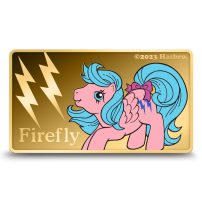

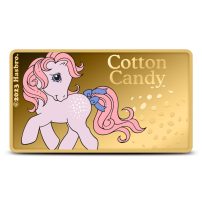
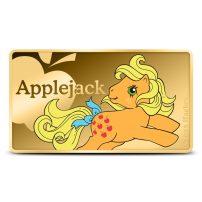
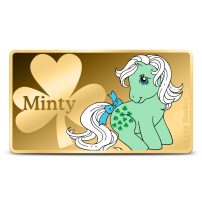
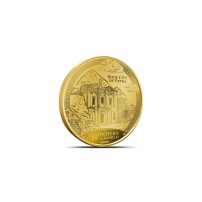
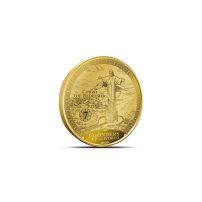
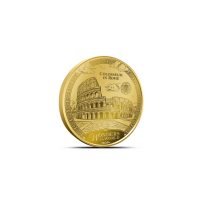
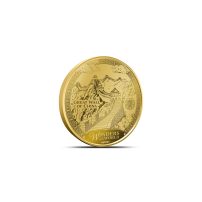
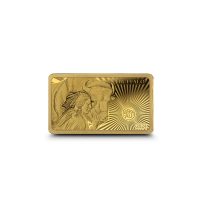
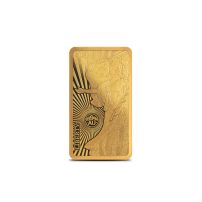
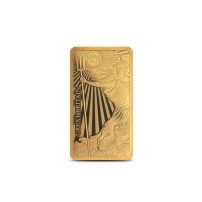


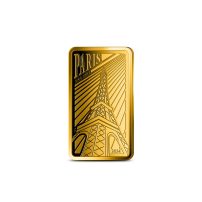
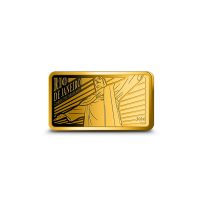
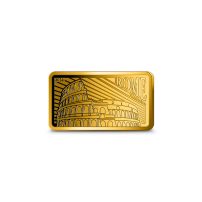
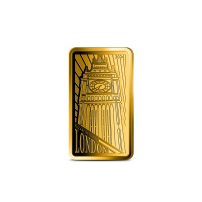
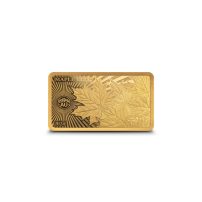
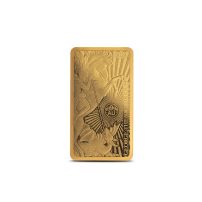
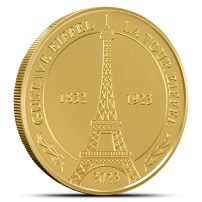
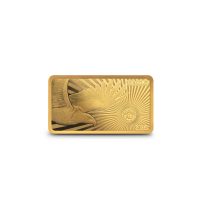
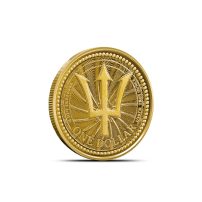

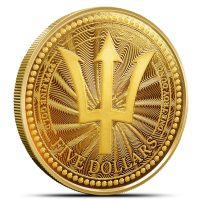
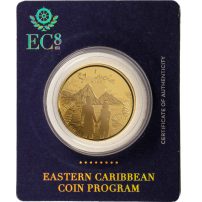
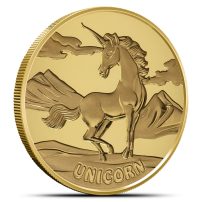
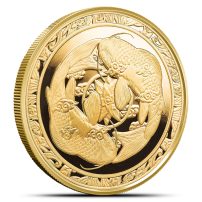
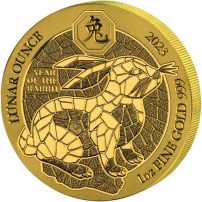
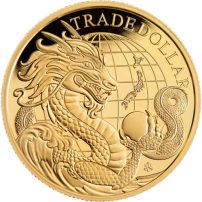
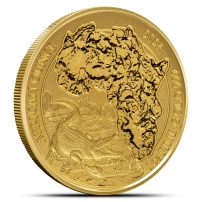
Beyond American Gold Eagles and Canadian Gold Maple Leafs, there are dozens of other gold coins produced by Government mints across the world. This category of products includes all gold coins not listed in the Eagles/Maple Leaf categories, including other US coins, European coins, Asian coins, and more.
While browsing our world listings, you may wonder if the originating country of a gold coin affects its value. In our opinion, the most important piece of any gold coin’s worth is its gold purity and weight. Given that most gold coins are of 24k (.999 or .9999) fine purity and 1 troy oz weight, we typically tend to recommend investors go with the cheapest coin available.
That being said, some investors prefer buying coins from their home country, or coins that may trade at a premium due to relative scarcity. If you choose to do this, you typically are no worse off in the long run, as coins that are more expensive now will typically sell for a higher price later, as well.
A facet of world Gold coins that attracts investors and collectors to them more than gold coins from the US or Canada is the fact that their designs are like nothing most people have ever seen before. Some of these coins come from the furthest, remote parts of the world and even though they are relatively small pieces of metal, the depictions and inscriptions present on the coins give you the chance to take home part of that country’s culture and history. A perfect example of this is the Austrian Philharmonic gold coin whose main images are representative of the country’s oldest, most famous orchestra.
With superior gold content and some of the most unique designs around, world gold coins are a great choice for any serious collector or investor.
While many investors are familiar with the imagery found on coins like the American Gold Eagle, Canadian Gold Maple Leaf, and the aforementioned Austrian Gold Philharmonic, there are a wide (and growing) number of major gold bullion coin programs available for investors to consider when buying gold. Below, you can read the basic details of some of the many popular programs out there, to include year of introduction, options, and metallic content.
The Armenian Noah’s Ark Series is a product of the Geiger Edelmetalle mint in Germany, a private minting company in Leipzig, Germany. The Armenian Noah’s Ark Series was exclusively a silver bullion collection when it was introduced in 2011. Its first addition in 2012 merely added to the range of silver coins available in the collection. It wasn’t until 2020 that the series gained its first gold bullion coins. The designs of the coins are the same as used on the silver coins and actually draw inspiration from a 2017 proof gold release of the coins.
The 2017 Proof Armenian Gold Noah’s Ark Coins marked both the first-ever release of proof coins in the series and the first-ever release of a gold version of the coin. The set included four gold coins with weights of 1 oz, 1/2 oz, 1/4 oz, and 1 Gram gold, each one containing .9999 pure gold content and face values assigned in Dram, the sovereign currency of the Republic of Armenia.
When Geiger Edelmetalle introduced the new Armenian Gold Noah’s Ark bullion coins in 2020, those same four weights were chosen as the representative investment-grade coins. On the obverse of each coin is the image of the Armenian coat of arms as selected by the nation in April 1992. It features a quartered shield supported by an eagle and a lion, with a crest at the center showcasing Noah’s ark resting atop Mount Ararat. For the reverse design field, Eduard Kurghinyan’s depiction of Noah’s ark from the Book of Genesis is featured in the center of the design field. The sun rises over Mount Ararat in the background field, while a dove flies into the foreground with an olive branch in its beak.
Palau, a small island nation in the western Pacific, has a few modern gold bullion coin programs. One notable series is the “Palau Treasures” series, which features various marine life and natural treasures found in Palau’s waters. These coins are typically minted in 99.99% pure gold and are available in different sizes.
The Cook Islands, a self-governing territory in the South Pacific, has a range of modern gold bullion coins. One popular series is the “Bounty” series, which pays tribute to the historical events related to the HMS Bounty and the mutiny on board. These coins are typically minted in 99.99% pure gold and come in various sizes.
Tuvalu, a Polynesian island nation, has several modern gold bullion coin programs. One notable series is the “Marvel” series, featuring famous Marvel comic book superheroes such as Spider-Man, Iron Man, Thor, and others. These coins are minted in 99.99% pure gold and are available in various sizes.
The EC8 gold coin series features a common obverse design across all the coins, which includes the official crest of the Eastern Caribbean Central Bank, along with the weight, purity, and year of issue. The reverse side of each coin highlights a distinct design representing one of the participating ECCB member countries.
Each gold coin is minted in 99.99% pure gold, commonly referred to as “four nines” gold, which signifies its high level of purity. The coins are available in various sizes, including 1/10 oz, 1/4 oz, 1/2 oz, and 1 oz, providing collectors and investors with options to suit their preferences.
The EC8 gold coins are recognized for their limited mintage, which adds to their appeal and potential for value appreciation. The series is released annually, with each new release highlighting a different member state’s culture, history, or iconic landmarks. The designs often incorporate symbols, landscapes, or figures that are significant to the respective country.
Finally, if you’re looking for a little more history in the designs of the world gold coins you purchase, you might want to look into our range of European Sovereign Gold Coins. The vast majority of these gold coins were issued prior to World War I as legal tender, everyday circulation currency in empires from the Kingdom of the Netherlands and the French Empire to the Austro-Hungarian Empire and the United Kingdom. Among the most common European Sovereigns you will find still available to modern buyers are the Corona denominations of the Austro-Hungarian Empire, Francs denominations issued by France and Switzerland, and the vaunted British Gold Sovereign, a coin with a history dating back to the 1480s when the English sovereign was introduced.
Please note that the diameter, thickness, and gold purity level of world gold coins can vary drastically, especially when you shop through the collection of European Gold Sovereigns listed on our website. If you navigate on any given production description to the “Specifications” tab, you can see the exact dimensions and purity for any given coin you are looking to purchase so that you are well informed before making any decisions.
If you have any questions about the gold coins listed within this category, please feel free to ask. JM Bullion customer service is available to assist you on the phone at 800-276-6508, on the web using our live chat service, and via our email address. If you have questions about payment methods, we would like to direct you first to our Payment Methods information page. If you cannot find your answers there, please don’t hesitate to reach out to our customer service team for further details.